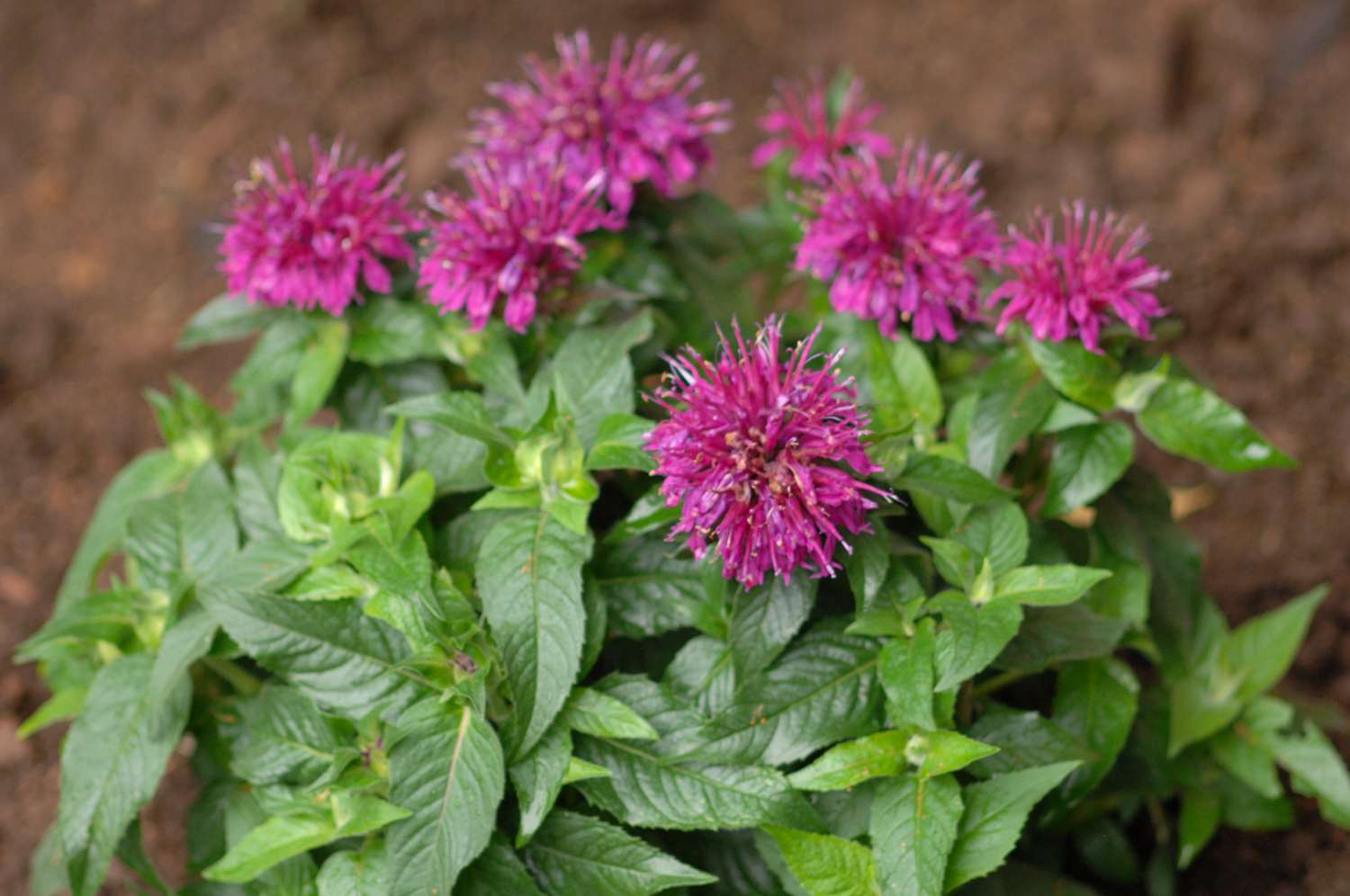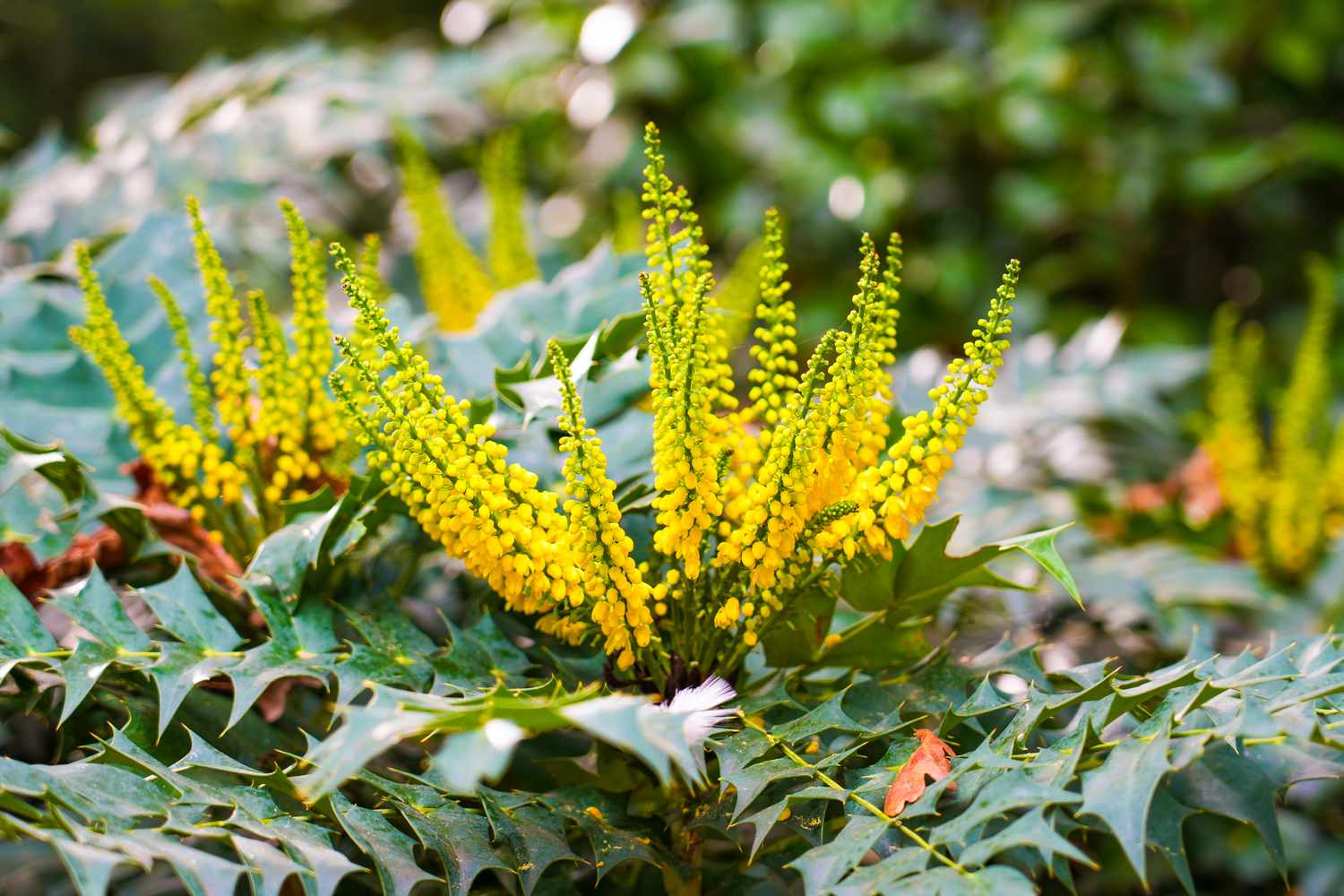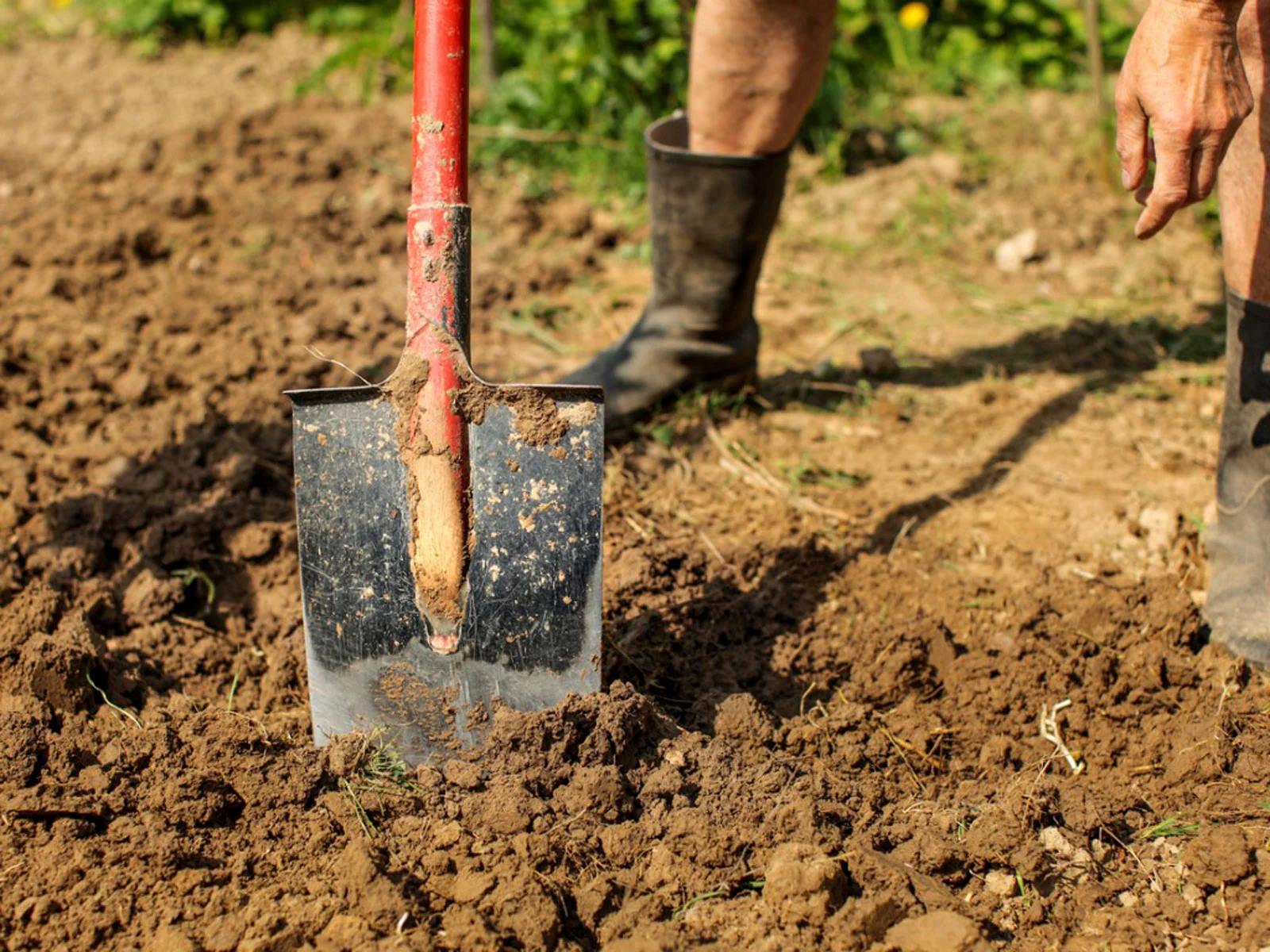Home>Gardening Basics>Understanding Soil>What Shrubs Will Grow In Clay Soil


Understanding Soil
What Shrubs Will Grow In Clay Soil
Modified: January 22, 2024
Discover which shrubs thrive in clay soil and learn the importance of understanding soil for successful gardening. Find the best options for your clay-based garden.
(Many of the links in this article redirect to a specific reviewed product. Your purchase of these products through affiliate links helps to generate commission for Chicagolandgardening.com, at no extra cost. Learn more)
Table of Contents
Introduction
Welcome to the world of soil – a fascinating and diverse ecosystem that plays a crucial role in the health and well-being of our plants and gardens. As an SEO expert with a deep understanding of soil, I am here to guide you through the wonderful world of clay soil and suggest the perfect shrubs that will thrive in this unique environment.
Clay soil is known for its high water retention capacity and its propensity to become compacted. It can be a challenge to work with, but with the right knowledge, you can turn this seemingly difficult soil type into a thriving garden bed filled with gorgeous shrubs.
Choosing the right shrubs for clay soil is essential to ensure their survival and growth. Certain shrub species have adapted and evolved to tolerate the heavy and dense nature of clay soil, making them ideal candidates for your garden. By selecting these specific shrubs, you can create a beautiful landscape that flourishes despite the challenges posed by clay soil.
In this article, I will guide you through the process of understanding clay soil and help you select the perfect shrubs that will thrive in this unique environment. I will also provide some valuable tips on maintaining and caring for these shrubs to ensure their long-term health and vitality.
So, whether you are a novice gardener looking to improve your clay soil garden or an experienced enthusiast seeking new shrubs to enhance your landscaping, this article is your comprehensive guide to finding shrubs that will flourish in clay soil.
Understanding Clay Soil
Clay soil is a common soil type characterized by its fine texture and high clay content. Unlike sandy or loamy soils, clay soil is made up of tiny particles that tightly compact together, resulting in a dense and heavy composition. This composition gives clay soil its unique characteristics and poses certain challenges for gardeners.
One of the main characteristics of clay soil is its excellent water retention capacity. The tiny particles in clay soil hold onto water for an extended period, making it difficult for excess water to drain away. This can lead to waterlogged soil, which can be detrimental to the health of plants, particularly those with shallow roots.
Another characteristic of clay soil is its tendency to become compacted. When clay soil is exposed to foot traffic, heavy machinery, or even heavy rainfall, it can quickly become compacted, reducing the availability of oxygen and nutrients to plant roots. This compaction also inhibits water infiltration, exacerbating the issue of waterlogged soil.
While clay soil can present challenges, it also offers several advantages. Due to its ability to hold onto nutrients, clay soil is typically rich in essential minerals and nutrients needed for plant growth. Additionally, the dense composition of clay soil provides a stable base for plant roots and helps prevent erosion in the garden.
To optimize the growing conditions in clay soil, it is important to improve its structure and drainage. Adding organic matter, such as compost or well-rotted manure, can help break up the compacted soil, improve drainage, and increase its fertility. Regularly incorporating organic matter into the soil will also improve its overall structure and provide a more favorable environment for plant roots to grow and thrive.
Understanding the characteristics and challenges of clay soil is crucial when selecting shrubs for your garden. By choosing shrubs that can adapt and thrive in this specific soil type, you can create a beautiful and resilient garden that overcomes the limitations of clay soil and flourishes with vibrancy and beauty.
Choosing the Right Shrubs
When it comes to selecting shrubs for clay soil, it is essential to choose plants that can tolerate the specific characteristics and challenges that clay soil presents. Not all shrubs are well-suited for this soil type, so it’s important to make informed choices to ensure the long-term health and success of your garden.
One crucial factor to consider when choosing shrubs for clay soil is their ability to withstand moisture retention. Since clay soil tends to hold onto water, it’s important to select shrubs that can handle these conditions without succumbing to root rot or other water-related issues. Look for plants that have a moderate to high tolerance for moisture, as they will be better equipped to thrive in clay soil.
Additionally, it is important to choose shrubs with deep root systems. Clay soil has a dense composition that can restrict the penetration of plant roots. By selecting shrubs with deep roots, you ensure that they can reach down into the soil to access water and nutrients. Deep-rooted shrubs also tend to be more stable and resilient, making them better equipped to withstand compaction and other challenges associated with clay soil.
Consider the climate and growing conditions of your specific region when selecting shrubs. Some shrubs may thrive in clay soil in one area but struggle in another due to variations in temperature, humidity, and sunlight. Research the recommended shrub varieties for your particular climate to ensure their suitability for your garden.
Lastly, take into account the aesthetics and requirements of the shrubs you choose. Consider factors such as size, shape, and flower or foliage colors that align with your desired garden design. Additionally, assess the maintenance needs of the shrubs, including pruning requirements, disease resistance, and overall care. Select shrubs that align with your gardening preferences and the level of effort you are willing to put into their maintenance.
By carefully considering these factors, you can choose the right shrubs that are well-suited for clay soil and create a beautiful landscape that thrives despite the challenges it presents.
Shrubs That Thrive in Clay Soil
While clay soil can present challenges for growing plants, there are several shrub varieties that have adapted and evolved to thrive in these conditions. By selecting these specific shrubs, you can ensure a successful and thriving garden in your clay soil.
- Lilacs (Syringa spp.): Lilacs are a popular shrub choice for clay soil. They can tolerate the heavy and dense nature of clay soil and are known for their beautiful and fragrant blooms. Lilacs are low-maintenance shrubs that add beauty and charm to any garden.
- Viburnums (Viburnum spp.): Viburnums are versatile shrubs that are well-suited for clay soil. They offer a wide variety of foliage, flower, and fruit options, making them a popular choice among gardeners. Viburnums thrive in full to partial sun and are relatively low-maintenance.
- Spirea (Spiraea spp.): Spirea shrubs are another excellent choice for clay soil. They are known for their beautiful clusters of flowers in various colors, including pink, white, and red. Spirea shrubs are relatively hardy and easy to grow, making them a favorite among both novice and experienced gardeners.
- Red Twig Dogwood (Cornus sericea): This shrub offers more than beautiful foliage and flowers. It also provides vibrant red branches during the winter months, adding interest and color to your garden. Red Twig Dogwood is well-adapted to clay soil and can tolerate wet conditions.
- Buttonbush (Cephalanthus occidentalis): If you are looking for a shrub that can tolerate consistently moist conditions in clay soil, consider the Buttonbush. This shrub produces unique round flowers and can attract pollinators to your garden. It thrives in full sun to partial shade and is well-adapted to wet environments.
Other shrub varieties that are known to thrive in clay soil include potentilla, privet, ninebark, and weigela. It’s important to research the specific needs and requirements of each shrub variety before planting them in your garden.
By choosing shrubs that are well-suited for clay soil, you can create a beautiful and flourishing garden that defies the limitations of this soil type. These shrubs will not only add beauty and visual interest to your landscape, but also provide habitat for wildlife and contribute to a healthy and resilient ecosystem.
Maintenance Tips for Shrubs in Clay Soil
Caring for shrubs in clay soil requires some specific practices to ensure their long-term health and vitality. By following these maintenance tips, you can help your shrubs thrive in clay soil and overcome the challenges it presents.
1. Proper watering: One of the key considerations in clay soil is water drainage. It’s important to water shrubs deeply but infrequently to encourage deep root growth. This will help prevent waterlogging and promote healthier plants. Monitor the soil moisture level and adjust your watering schedule accordingly.
2. Mulching: Applying a layer of organic mulch around the base of your shrubs can help regulate soil moisture, prevent weeds, and improve overall soil health. Use a 2-3 inch layer of mulch, ensuring it doesn’t touch the stem or trunk of the shrub to avoid rotting.
3. Regular pruning: Pruning is essential for maintaining the shape and overall health of your shrubs. Remove any dead, damaged, or diseased branches. Additionally, prune to encourage airflow and prevent overcrowding, as this can lead to increased susceptibility to diseases and pests.
4. Fertilization: Clay soil tends to be rich in nutrients, but it can also be compacted and lacking in organic matter. Applying a slow-release, balanced fertilizer in spring can help provide the necessary nutrients for shrub growth. However, avoid over-fertilizing, as this can lead to excessive vegetative growth and weaken the shrub.
5. Soil amendment: Improve the structure and drainage of clay soil by regularly incorporating organic matter, such as compost or well-rotted manure. This will help break up the compacted soil, improve aeration, and increase its fertility. Add organic matter to the planting hole when installing new shrubs and top-dress the soil periodically.
6. Avoid heavy foot traffic: Clay soil is prone to compaction, so it’s important to minimize any unnecessary foot traffic or heavy equipment in the garden area. Limiting compaction will help maintain healthy soil structure and ensure better root growth and overall plant health.
7. Monitor for pests and diseases: Regularly inspect your shrubs for signs of pests or diseases. Early detection and treatment can prevent extensive damage. Consult with local gardening resources or experts to identify and address any issues that may arise.
8. Regular maintenance: In addition to the specific tasks mentioned above, regular overall maintenance such as weeding, monitoring for invasive plants, and addressing any issues promptly will help keep your shrubs healthy and thriving in clay soil.
By implementing these maintenance tips and actively caring for your shrubs in clay soil, you can create a flourishing garden that defies the challenges of this soil type. With patience and diligence, your shrubs will reward you with their beauty and resilience, enhancing your outdoor space for years to come.
Conclusion
Cultivating a thriving garden in clay soil may seem challenging, but with the right approach and knowledge, it is entirely possible. By understanding the unique characteristics of clay soil and selecting shrubs that are well-suited for its conditions, you can create a stunning landscape that surpasses the limitations of this soil type.
Remember to choose shrubs that can tolerate moisture retention and have deep root systems to flourish in clay soil. Consider the climate and growing conditions of your region and select shrubs accordingly. Pay attention to their maintenance requirements and aesthetic appeal to ensure a lasting and visually pleasing garden.
Implementing proper watering techniques, mulching, regular pruning, soil amendment, and other maintenance practices will contribute to the long-term health and vitality of your shrubs. Monitoring for pests and diseases, as well as minimizing compaction, are additional measures that will support the optimal growth of your shrubs in clay soil.
Don’t be discouraged by the challenges that clay soil presents. With patience, dedication, and the right shrubs, you can transform your garden into a vibrant and beautiful oasis. By embracing the unique characteristics of clay soil and working with it rather than against it, you will create a sustainable and thriving garden that brings joy and beauty to your outdoor space.
So, roll up your sleeves, get your hands dirty, and embark on the exciting journey of cultivating a remarkable garden in clay soil. Your efforts will be rewarded with a lush and vibrant landscape that showcases the resilience and beauty of your carefully selected shrubs.








